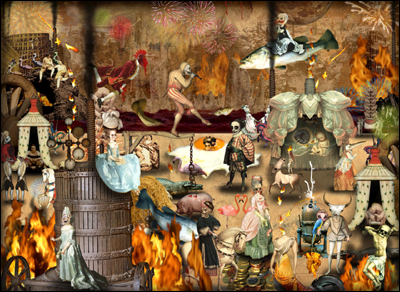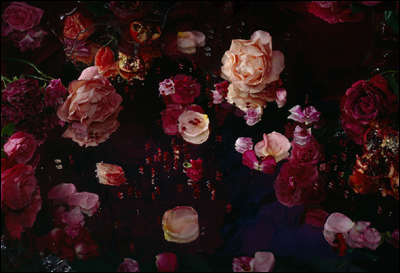MizEnScen’s somber, surrealist collages

Bride I
MizEnScen’s elegant digital collages, laced with melancholia like mournful mezzotints, are a surrealist fusion of gleaned vintage engravings, illustrations, and photography in which she expresses her love of the macabre and whimsy through her work while “exploring the juxtapositions between what some consider beautiful and horrific”.
“To me,” she notes, ” they are one of the same.”
“The artist, in my opinion, is a monstrosity, something outside of nature”. -Gustave Flaubert,
Referencing this provocative quote, she postulates that this sentiment “… pertains to my works’ visual theme and aesthetic. I create images that draw on my morbid sensibilities and because of that, the images exhibit dark or morose elements. In essence, I’m inclined to the things outside of nature because that is precisely what I find beautiful.”
Those unfamiliar with her artwork may also know her as MizEnScen on tumblr in which she curates, among other things, a striking collection of film stills from early black and white cinema and cites an unapologetic love of the breathtaking, enigmatic Greta Garbo. It is unsurprising then, that she lists among her artistic inspirations: “silent film, melancholia, carnivals (sideshows), The Weimar Republic, Dia De Los Muertos, Edwardian/Victorian photography and illustrations, Surrealism, Pop Surrealism, engravings (particularly medical illustrations), German Expressionism, oddities/curios, graphic art, collage, and Dada.”
Her process involves both digital and traditional methods, about which she shares the following: “When I create a digital collage, I may or may not begin with an idea, but I simply rummage through illustrations to gather inspiration and play around with them in Photoshop. Other times I create elements that I want to incorporate either as part of a altered-digital collage or my own illustration by sketching in graphite and ink, then scanning the artwork to alter in Photoshop. Some of my other artwork is done in traditional paint and brush, my new favorite method being dry brush. Essentially the tools I use are graphite, ink, acrylic, watercolor, oil, paper, canvas, engravings/illustrations, and Photoshop.”
Though not currently an artist by trade, she is working toward making her artwork a full-time venture. More of MizEnScen’s sketches, collages, etc. can be see on her flickr page and art prints are available through society6. See below the cut for a small selection of her wistful, whimsical collages, compositions which resonate with both “traces of sadness and fleeting gladness”.















